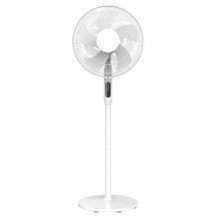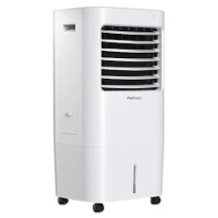Dehumidifier purchasing advice: how to choose the right product
- What you need to know
- The ideal room humidity is between 45 and 55 percent. A dehumidifier can create this level and keep it constant.
- Too high humidity leads to dangerous mould growth, too low humidity increases the risk of infection.
- A distinction is made between dehumidifiers that work by condensation and those that dry the air by absorption.
- Dehumidifiers for home use should work economically and quietly. The dehumidification capacity must correspond to the specific need.
- Additional features such as a timer, hygrometer or hygrostat make it much easier to operate a dehumidifier.
Ideal humid – room humidity
If house dust mites and mould spores thrive in the four walls of your home, illnesses and allergies can be the disastrous consequence for the occupants. Perfect conditions for the growth and multiplication of the two disease-causing agents: high humidity. The simplest way to reduce room humidity and ensure a better indoor climate is to use a dehumidifier.
But how do you even recognise that your room is too humid? The measuring device that can be used to determine the moisture content of the room air is called a hygrometer. The optimum air humidity in working and living rooms should be between 40 and 65 percent, ideally between 45 and 55 percent.
A humidity of permanently less than 40 percent leads to drying out of the mucous membranes of the nose and throat, which increases the risk of infections. Excessive humidity of over 65 percent, on the other hand, causes people to become exhausted more quickly: they feel weak and exhausted.
More serious, however, is the risk of excessive room humidity, which encourages mould growth in poorly ventilated areas of the room. Mould thrives and spreads from a relative humidity of 60 percent. Particularly damp areas in the masonry or the frame areas around windows are affected, as cold outside air or cold masonry and warm room air meet there and condensation forms.
Particularly high humidity occurs in the following rooms:
- Bathrooms, where the air absorbs moisture from showering or bathing.
- Kitchens that do not have an efficient extractor system
- Rooms where laundry is dried
- Basement rooms that are hardly ever heated
- Fitness rooms where people secrete large amounts of sweat.
However, humidity can also rise quickly in any other room where people are present, unless it is aired out at regular intervals.
Quite humid!
An average household produces about twelve litres of moisture every day, which is absorbed by the air in the room. A person evaporates about half a litre to two litres of liquid per day through breathing and perspiration.
The consequences of moisture damage and mould growth for health are serious: headaches, allergies, asthma and other respiratory diseases can be the result. This is a danger that should not be underestimated, not only for children but also for adults.
Why a dehumidifier?
You may have noticed that one or more rooms in your flat or house are actually too humid, either because of the measurement with a hygrometer or because of already existing mould. But what can you do? A room dehumidifier provides an effective and efficient remedy by reducing the air humidity to an adjustable level and keeping it constant at this level. The areas of application for a dehumidifier are as varied as the problems that can arise from excessively humid room air.

Mould prevention
Cold bridges can easily form in room corners, especially on exterior walls and in window frames, if the insulation is inadequate. If the air humidity condenses there, the door is wide open for mould growth. In wet areas such as bathrooms or basements, mould often finds ideal conditions to thrive. Visual impairments, musty smells, structural damage and – much more serious – health problems for the occupants are the result. A dehumidifier reduces the air humidity to such an extent that condensed water cannot even precipitate.
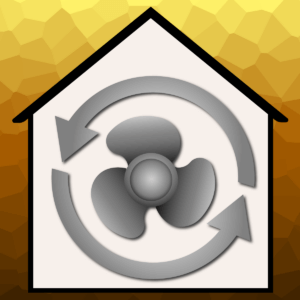
Building drying
Whether it’s a new building, renovation or building refurbishment: anyone who has ever been involved in interior work knows from their own experience that fresh plaster, mortar, screed, paint or wallpaper lead to an enormous increase in humidity in the room. However, quick drying is often essential in order to be able to carry out further work steps. A powerful room dehumidifier serves as a reliable and fast construction dryer and creates a pleasant room climate.

Water damage
A burst pipe or leaks can quickly result in a flooded basement or a wall with extensive moisture penetration. If the standing water on the surface is comparatively easy to remove after repair, the masonry still retains the moisture for a long time and is not easy to dry. Therefore, you should always use a dehumidifier after repairing a pipe damage to keep the risk of consequential damage as low as possible.

Laundry drying
Wet laundry dries by releasing its residual moisture into the ambient air after the washing process. The drier the ambient air, the more moisture it can absorb in a shorter time. Therefore, wet laundry dries faster in dry rooms than in rooms with high humidity. A dehumidifier in the laundry room therefore ensures short drying times and gentle drying of the textile fibres even in winter. It keeps the humidity at a constant level despite the additional moisture from the laundry. If you can only dry laundry indoors, you should definitely use a dehumidifier.

Conservation
Dehumidifiers are always used in storage rooms, warehouses, archives, libraries and museums. Whether food, written documents, works of art or archaeological finds – all these things require a certain air humidity and conditions that are as constant as possible in order to remain durable and preserved. A dehumidifier creates optimal and constant conditions thanks to its precise scalability and adjustability. This is the basic prerequisite for reliable preservation.
What types of dehumidifiers are there?
Not every dehumidifier achieves its goal of ideal room humidity in the same way. The generic term “dehumidifier” covers devices with different functions. Depending on the technology used, these are
- Compressor-operated condensation dehumidifiers
- Adsorption dehumidifiers
- Peltier dehumidifiers
- Granulate dehumidifier
Each type of dehumidifier has specific advantages and disadvantages and is therefore best suited for different applications.
Compressor-driven condensing dehumidifiers
Air dryers that work on the basis of the condensation principle are the most popular dehumidifiers for use in private households. Sometimes they are also called compression dryers. They work electrically and are connected to the mains via an ordinary mains plug. A fan draws in the moist ambient air and directs it over a cooling element. A large volume of air passes through the unit in a short time thanks to the active suction of the room air. The performance of a condensation dehumidifier is correspondingly high.
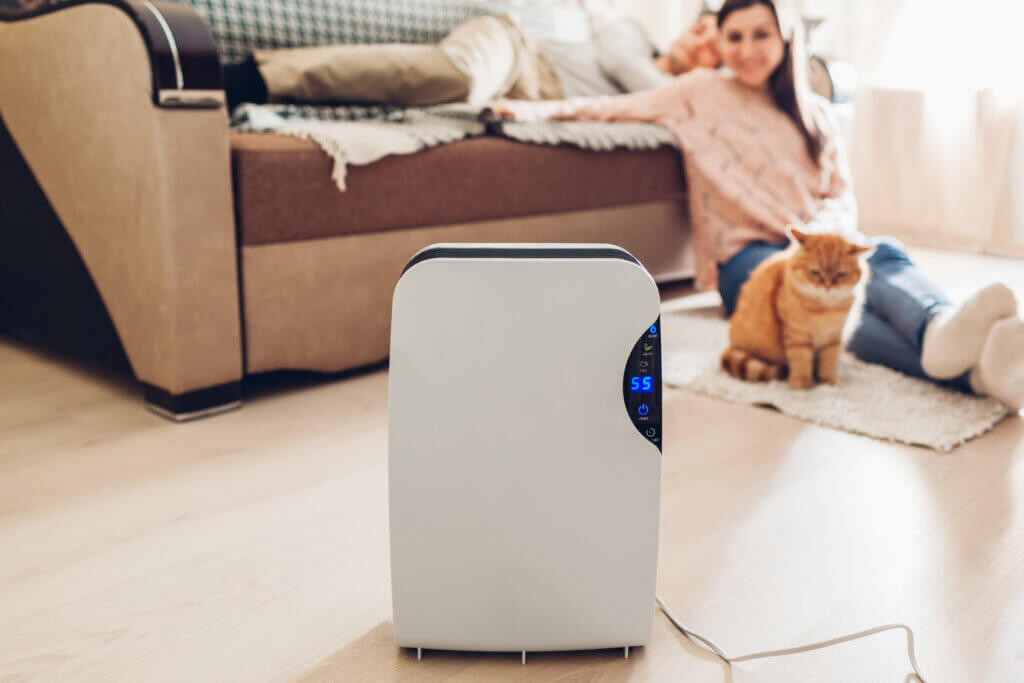
The cooling process causes the moisture in the room air to condense. The higher the temperature and the moisture content of the air, the more efficiently this type of dehumidifier works. The precipitation drips into a water tank or container integrated in the device, which the user must empty at regular intervals. As an alternative to the collection container, some devices have the option of connecting a drain hose and using this to drain the condensation water outside or into the waste water pipe.
Pro points
- Powerful
- Can be set to exact humidity level
- Available for any room size
- Continuous operation possible
Drawbacks
- Dependence on mains power
- Operating costs for electricity
- Constant noise development
- Emptying or draining of the container necessary
A condensation dehumidifier is scalable depending on the unit size and capacity and thus adapts to any room size. Possible areas of application include every room in an ordinary private household, i.e. living rooms, bathrooms, bedrooms, cellars and laundry rooms. In a professional context, condensation dehumidifiers are used in museums, archives, server rooms or for drying buildings and repairing water damage.
Popular manufacturers and model series of the condensation dehumidifiers popular for household use are:
- Comfee, for example with the MDDF model series.
- Aktobis, among others with the WDH product series
- Trotec, with the dehumidifiers of the TTK series
- Suntec with the DryFix series
Peltier dehumidifiers
Just like compressor-operated condensation dryers, Peltier dehumidifiers also belong to the group of condensation dehumidifiers. However, the mode of operation of the Peltier dehumidifier is not based on dehumidification by means of a compression refrigerating machine, but on the application of an electrical voltage, whereby a hot and a cold surface are generated in a Peltier element, also called TEC (Thermo-Electric Cooler).
A fan draws in the room air, whose moisture condenses as water vapour on the cold surface. The water drips into a collection container. The dry air then passes the hot surface and leaves the dehumidifier as warm room air.
Pro points
- Very compact
- Quiet in operation
- Low power consumption
- Inexpensive
Drawbacks
- Low efficiency
- Dependence on mains power
- Only suitable for small rooms
- Emptying of the collection container necessary
Due to the simple technology and the compactness of the components, Peltier dehumidifiers are comparatively small and cheap to manufacture. They require little power and are very quiet. On the other hand, they are not particularly powerful and have only about one third of the efficiency of a compressor-driven condensing dehumidifier.
A Peltier dehumidifier is not suitable for the permanent dehumidification of larger living spaces, but primarily for the temporary dehumidification of smaller, closed rooms. They are recommended for use in clothes and shoe cupboards, in small toilet rooms or in pantries.
Granulate dehumidifier
A granulate dehumidifier does not require electricity. This means that such dehumidifiers are not only independent of the power grid and obviously the most environmentally friendly dehumidifier variant, but due to their compact design they are also easy to transport and can be set up anywhere. In addition to moisture, these models also absorb unpleasant odours.
The granulate dehumidifier usually consists of a plastic container filled with granulate, usually hygroscopic calcium chloride. The dehumidifier does not actively draw in the air, it works passively as an absorption dehumidifier and thus removes moisture from the room air very slowly by the granulate turning into a hydrate when moisture is absorbed. The user can pour this into the drain. One kilogram of granulate absorbs about four litres of moisture; the user must replace the saturated granulate regularly. This results in follow-up costs.
Pro points
- Very compact and mobile
- No power consumption
- Absorbs even unpleasant odours
- No operating noise
Drawbacks
- Low efficiency
- Low absorption volume
- Follow-up costs due to frequent granulate replacement
Due to their low dehumidification performance, granulate dehumidifiers are not suitable for larger living rooms that are frequently visited by several people. However, they are a practical solution for smaller, non-ventilated rooms, garages, cellars, summerhouses, caravans or cars.
Adsorption dehumidifier
In contrast to the condensation dehumidifier, an adsorption dehumidifier already works at low temperatures from one degree Celsius. This type of dehumidifier is also electrically operated and actively draws in the ambient air. Responsible for this in these models is a sorption wheel that sucks in the air and passes it through a hygroscopic sorbent, usually a silicate gel. This agent absorbs the moisture in the air by adsorption and emits dry air.
The now moist adsorbent must be dried again in a second step, desorption or regeneration. To do this, the dehumidifier heats dry room air and passes it through the adsorbent in the opposite direction. This process consumes additional electricity.
Pro points
- Powerful
- Works at low temperatures
- Achieves a high degree of drying
Drawbacks
- Dependence on mains power
- High power consumption
- Expensive to buy
The temperature-independent process is recommended for use in cool environments and can produce particularly low room humidity. It is therefore particularly common in the pharmaceutical industry and in electrical engineering. Adsorption dryers are usually less recommended for private use because they consume more electricity than condensation dryers, and too low room humidity can also cause damage to building fabric and furniture. However, they are well suited for drying unheated basements.
Air cleaners are not dehumidifiers, or are they?
Similar names, but different functions: While one removes moisture from the air, the other rids it of pollutants. Air purifiers clean the air by using filters. The clean air is then returned to the room. Dust, animal hair, pollen and smoke particles are thus filtered out of the air. This is why air purifiers are particularly suitable for allergy sufferers. Air purifiers are compact devices that can be used in any room of the house.
The use of both devices is recommended, as they support each other in their functions and ensure a pleasant indoor climate. An air purifier picks up where a dehumidifier reaches its limits. Because of this compatibility of purifier and dehumidifier, there are models that combine both in one. These devices not only reduce the water content in the air, but also keep it as clean as possible.
Where can you use the dehumidifier?
Depending on the type, dehumidifiers are suitable for different locations. Where you can use which dehumidifier and which specific advantages a dehumidifier can deliver at the installation location depends on the desired installation location and intended use.
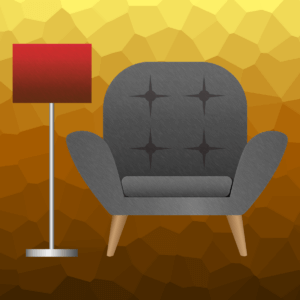
Living rooms
If you want to dehumidify an entire flat, you should purchase a condensation dehumidifier for each room. Place the dehumidifier in a central position if possible. Close windows and doors during dehumidification. If you do not want to buy several units, you can also dry room by room with the same dehumidifier. In this case, however, you should make sure that the dehumidifier has wheels and is lightweight. It is essential that the dehumidifier for use in the living area is quiet. Mobile dehumidifiers are available with dehumidification capacities from 8 to 25 litres.

Bathroom
We produce the most humidity when we shower. The relative humidity increases to over 90 percent. It is therefore advisable to keep windows and doors closed while showering and to keep the dehumidifier running for another 20 to 90 minutes. A dehumidifier with a dehumidification capacity of 8 to 12 litres is sufficient for a normal bathroom. This way, fogged mirrors, damp towels and mould growth can be prevented.

Bedroom
We spend a large part of our lives in the bedroom. During sleep, a person loses up to two litres of fluid, and mattresses and bed linen that are too damp in turn promote the proliferation of mites. For restful and healthy sleep, an ideal air humidity of 45 to 55 percent is therefore immensely important. However, so that the dehumidifier does not disturb your sleep, it should work as quietly as possible. Adsorption dryers are ideal in this case. An alternative is to keep the dehumidifier running during the day and switch it off at night. In this case, you should make sure that the appliance has good energy efficiency.

Cellar and warehouse
Moisture in the cellar damages the inventory and the building fabric. An energy-efficient compressor-driven condensation dryer suitable for continuous operation, adapted to the size of the cellar, is ideal for keeping the humidity in the cellar at a constantly low level. The same applies to storage rooms without windows. If the humidity level remains constantly below 60 percent, mould doesn’t stand a chance.
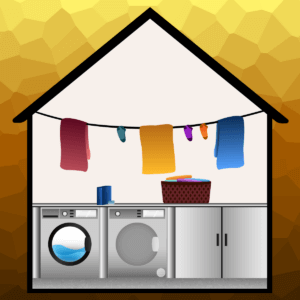
Laundry drying room
The gentle and comparatively fast drying of laundry with a dehumidifier is more environmentally friendly than using a tumble dryer and protects textiles from fibre damage and colour loss. With a dehumidifier, the windows can remain closed even in winter and the laundry dries as well and as quickly as it does on the clothesline outside in summer. In the drying room, you can use mobile condensation dehumidifiers for temporary operation or mount a dehumidifier on the wall.

Caravan and gazebo
Thin walls, poor insulation and several people living, cooking, sleeping, possibly also showering or doing laundry in a confined space: caravans, mobile homes, gazebos and boats offer the best conditions for mould growth. Small, quiet, easily transportable and compact condensation dryers as well as absorption dryers are suitable for reducing humidity in all these cases. If there is no connection to the mains, only the latter variant comes into question anyway.
What to look for when buying a dehumidifier?
How do you tell the difference between a good and a not so good air dryer? And how do you find the air dryer that best suits your requirements? With the help of a few key figures, you can already clearly narrow down the field of possible models:
- Dehumidification capacity
- Power consumption
- Noise emission
- Capacity
What dehumidification capacity should the dehumidifier have?
The dehumidification capacity of a dehumidifier is given by the manufacturer in litres. This number of litres refers to the maximum amount of water that the dehumidifier can remove from the room air within 24 hours. A dehumidifier with a dehumidification capacity of “12 litres”, for example, removes up to twelve litres of water per day from the room air. For home use, devices with a dehumidification capacity of 8 to 25 litres are sufficient, depending on the installation site, area of application and room size. Special building dryers, on the other hand, can have a much higher dehumidification capacity of 50 litres or more.
How high should the power consumption be?
The power consumption describes the power consumption of a dehumidifier. If you want to use the dehumidifier to maintain a constant humidity level, you should make sure that the device consumes as little power as possible. However, the wattage must always be put in relation to the dehumidification performance of a device. Naturally, a more powerful dehumidifier tends to consume more electricity than a small, less powerful device.
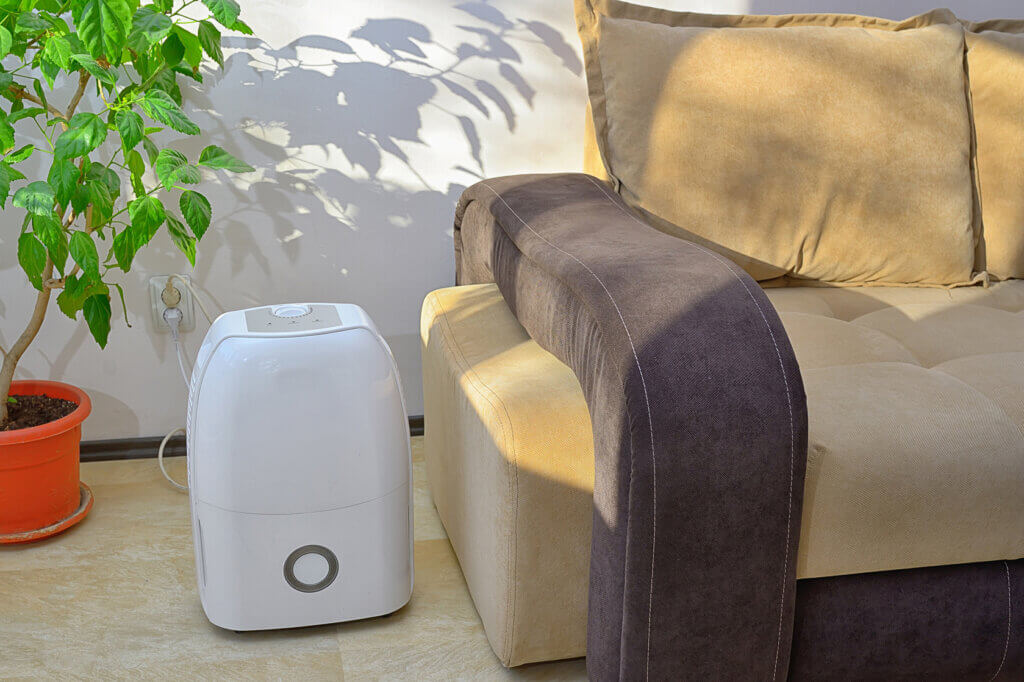
A compressor-operated room dehumidifier with a dehumidification capacity of 20 litres usually has a power consumption of about 450 watts. For 16-litre units, 350 watts is a good guideline, for 10-litre dehumidifiers 250 watts.
What noise emission should the dehumidifier have?
If you want to operate an electric dehumidifier in a living room, you should make sure that the unit is as quiet as possible and never exceeds 50 decibels. Most devices for home use produce sound emissions between 40 and 50 decibels. For comparison, a quiet ceiling fan emits about 35 decibels, a home that is perceived as quiet has 40 decibels, and 50 decibels is equivalent to soft radio music or birds chirping. A special construction dryer is not suitable for use in living areas because of the relatively loud operating noise. For use as a construction dryer, the focus is on performance anyway, while operating noise hardly plays a role.
What capacity should the tank of the dehumidifier have?
If the collection container for the water extracted from the air is too small, the more frequently emptying is necessary. This is not only a nuisance, but may mean that you may not be able to keep a unit running permanently if you are not at home during the day, for example. Therefore, make sure that the water tank is of sufficient size. For a 16-litre dehumidification unit, the tank should hold at least 3 litres, for a 20-litre unit 4.5 litres.
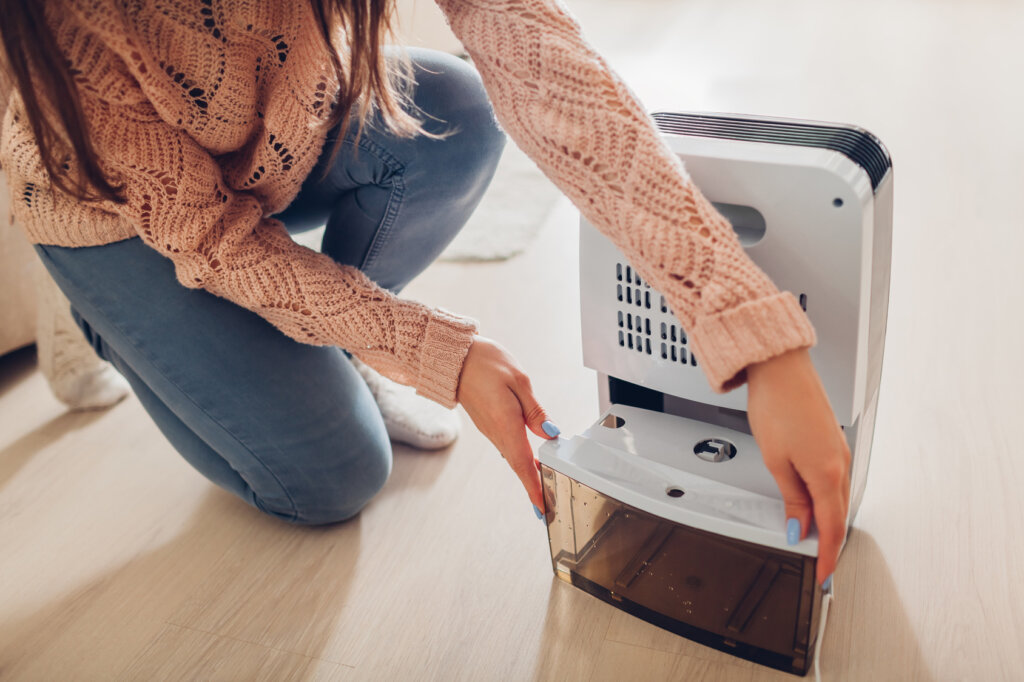
It makes sense to have a visible water level indicator that shows at a glance from the outside how full the container is. Make sure that the appliance is equipped with an overflow protection. This prevents the water tank from overflowing when it is full. The protection automatically switches the appliance off if necessary.
What features should the dehumidifier have?
In addition to the purely technical key figures, you should also pay attention to extra and comfort features that make it easier for you to operate the dehumidifier. For example, it makes sense to have a built-in hygrometer that shows you how high the current room humidity is.
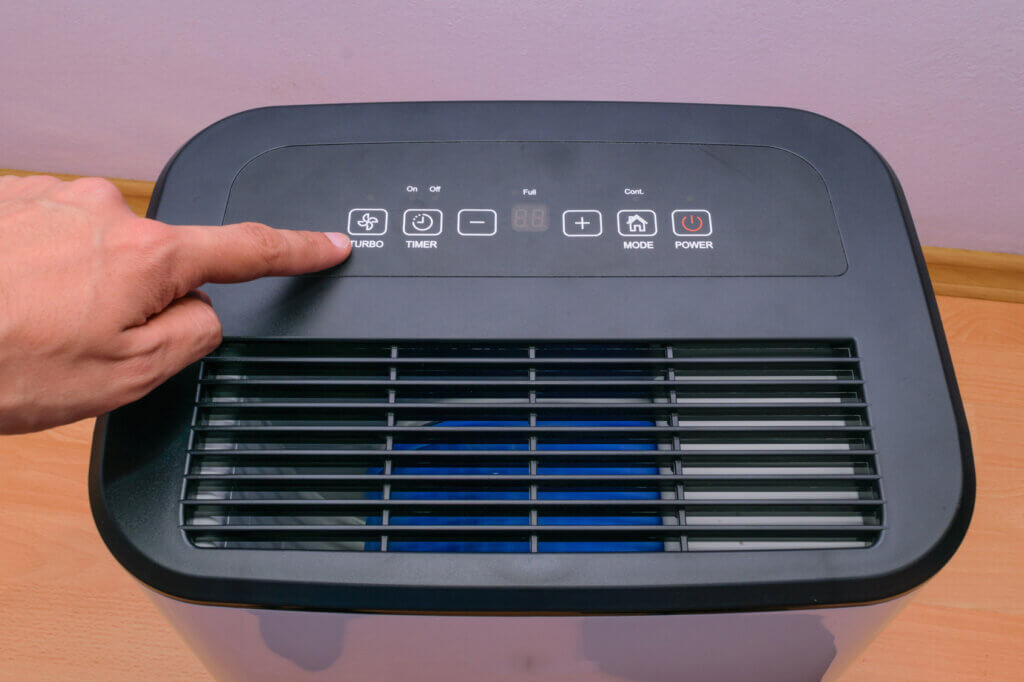
If you want the dehumidifier to work in your absence, a timer function is very useful. Via a display you can usually set exactly when the dehumidifier should start and stop working. Alternatively or in addition to the time setting, a hygrostat allows you to set a desired room humidity level. The dehumidifier then works until this level is reached and then maintains it automatically.
Since a dehumidifier sets the air in motion by sucking it in and expelling it again, it inevitably also stirs up house dust. This can sometimes be a problem for allergy sufferers. To ensure that the dry air leaves the dehumidifier clean, it is worth buying a device that is equipped with a dust filter.
How portable is the dehumidifier?
If you want to use a dehumidifier alternately for dehumidifying different rooms, you should pay attention to the total weight of the device. The lighter it is, the easier it is to transport, for example up and down stairs. Castors and a carrying handle are also useful for transporting the dehumidifier to the desired location without any problems.
Image 1-5: © FinalCheck | Image 6: © maryviolet / stock.adobe.com | Image 7-12: © FinalCheck | Image 13: © icarmen13 / stock.adobe.com | Image 14: © maryviolet / stock.adobe.com | Image 15: © Florin / stock.adobe.com

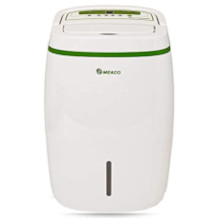
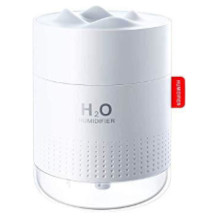
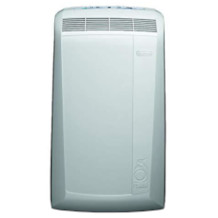

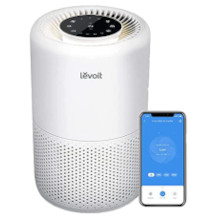
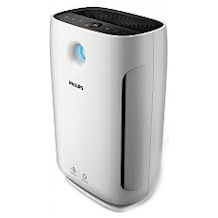
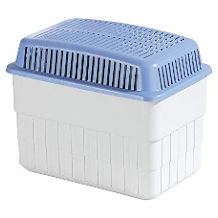
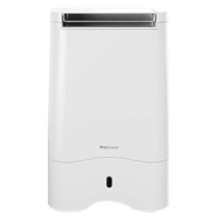
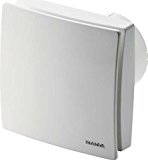
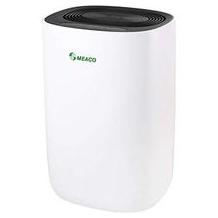
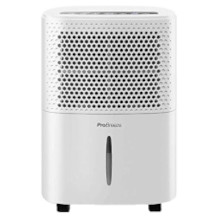
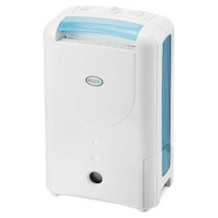

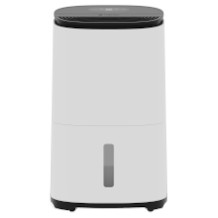
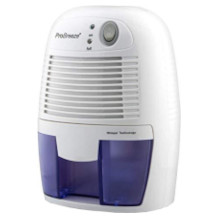
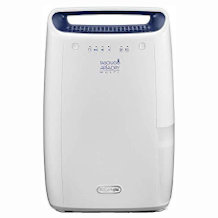
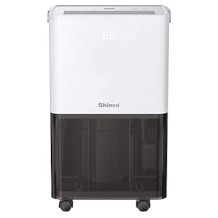
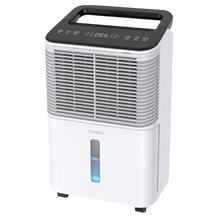
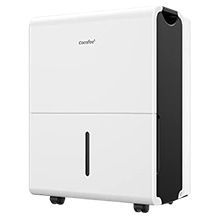
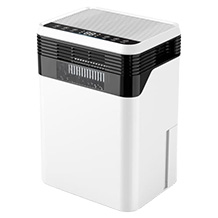
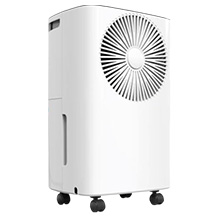
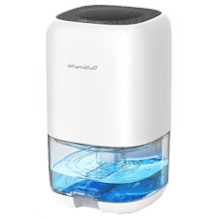
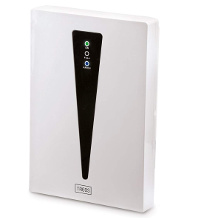

 5,590 reviews
5,590 reviews






